
Video
Narrative
The protagonist wakes up in a spaceship, not knowing where she is, and who she is. She has to figure these questions out and accomplish her mission by solving musical puzzles.
She discovers that her she is Rea Song, the head astronaut for a space mission to find a mysterious mateiral 'M' that has a shot at saving the Earth. She has to scare away the mighty Chucken Sphinx to access the wormhole by the Pyramid.
Next to the beautiful 256 space rocks, she finally crosses the Event Horizon to enter the black hole.
She finds a box that contains Material M, something that the Creator left for humanity. She has to play a song that shows appreciation to open the box and find out what it is.
Details Explained
Name:
The Epilogue Scene somewhat captures this, but Rea is the intersection between the words 'DREAM' and 'REAL'. Song is a Korean surname, and I thought it would be fitting given the final scene, where the protagonist needs to play a song into the black hole to retrieve Material M.

This is a beautiful drawing of Rea by the most talented Eunice Kim.
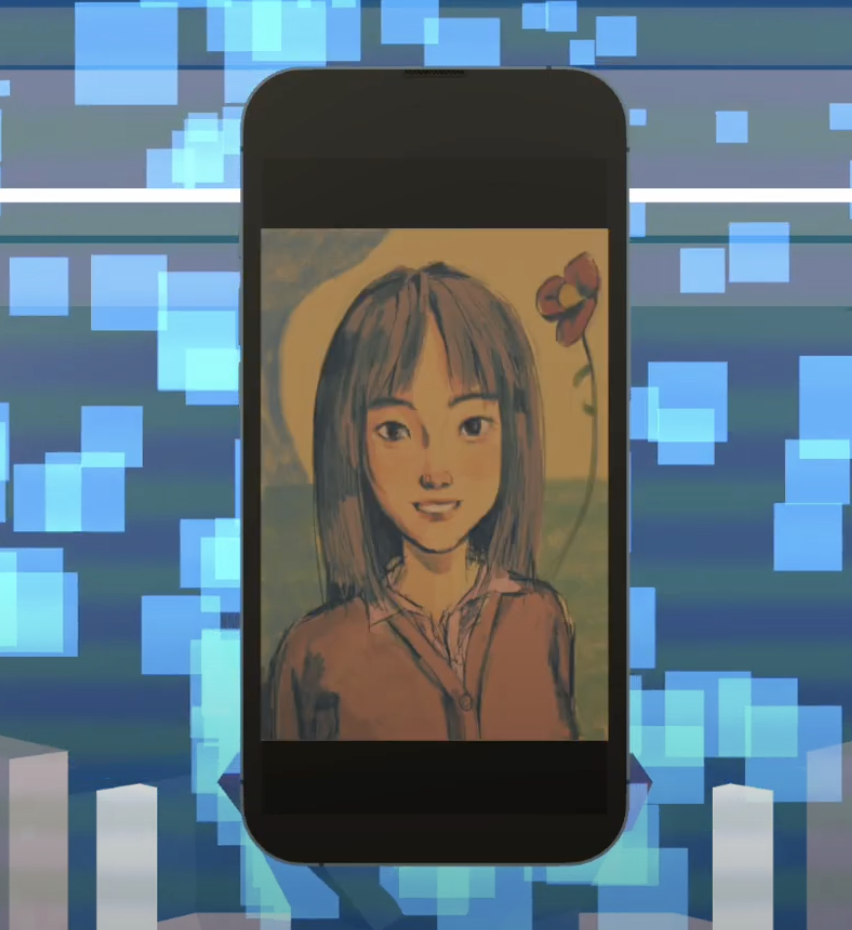
Chess Piece Positions:
The positions of the chess pieces in the ChuckMeToTheMoon Lock was actually the final positions of the Kasparov Immortal, which is considered to be the greatest chess game ever played. I love that game, and I am still mesmerised by all the calculations and well thought-out moves Kasparov made throughout the game and wanted to pay an homage. I actually thought about this while I was creating the Chess Sequencer, which was the reason that I decided to remove a whole bunch of sounds (such as the psyonic storm) from it, to 'leave it clean' for its next usage.

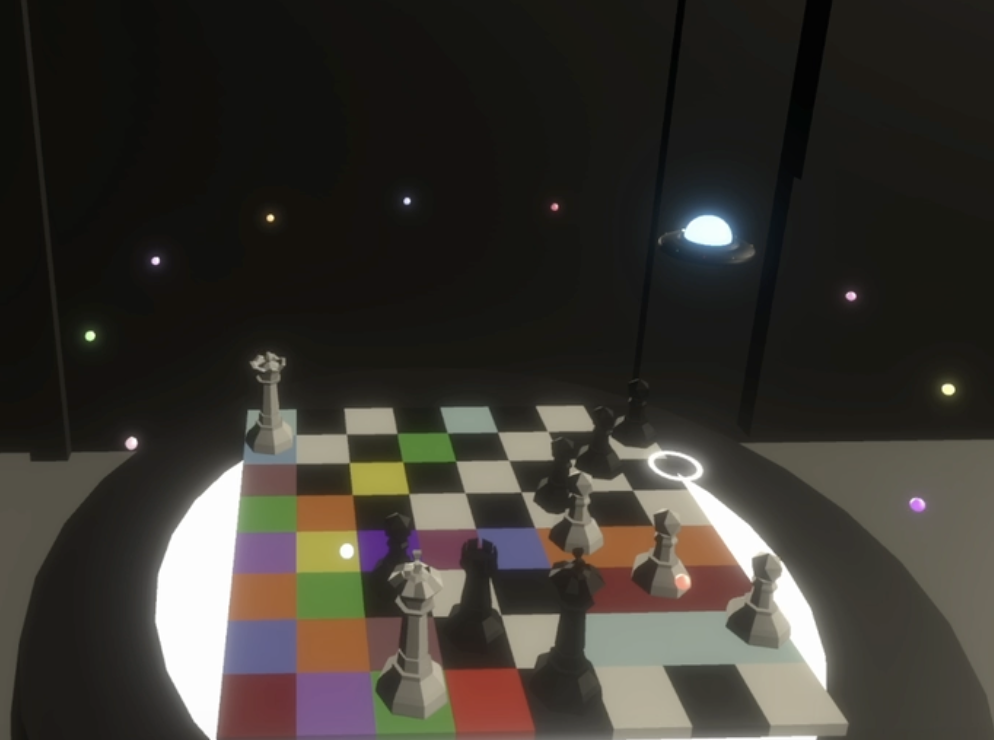
BlackHole:
The global Chuck Event Horizon.
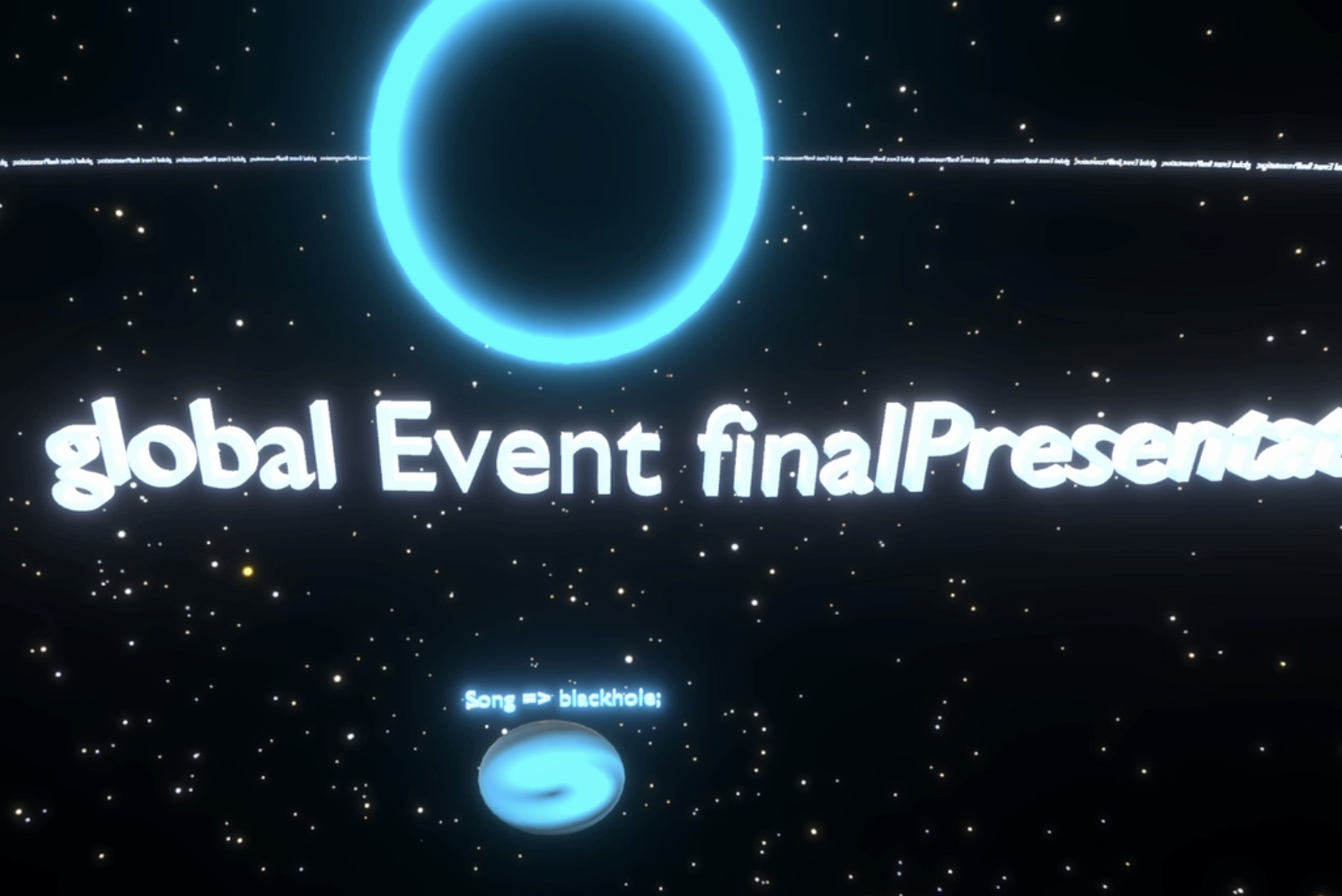
Epilogue
(1) Letter: The reason that Rea was able to use musical elements to recover memory was because musical memory is a little like muscle memory, as well as because it is strongly connected with love, which is the most powerful thing.
(2) Chickencers: The chickencers are also enjoying Christmas. The Chucken that used to guard the Pyramid is still running, as it's not used to new sounds like Dynamite. One day, maybe it might start liking BTS and will no longer be afraid?
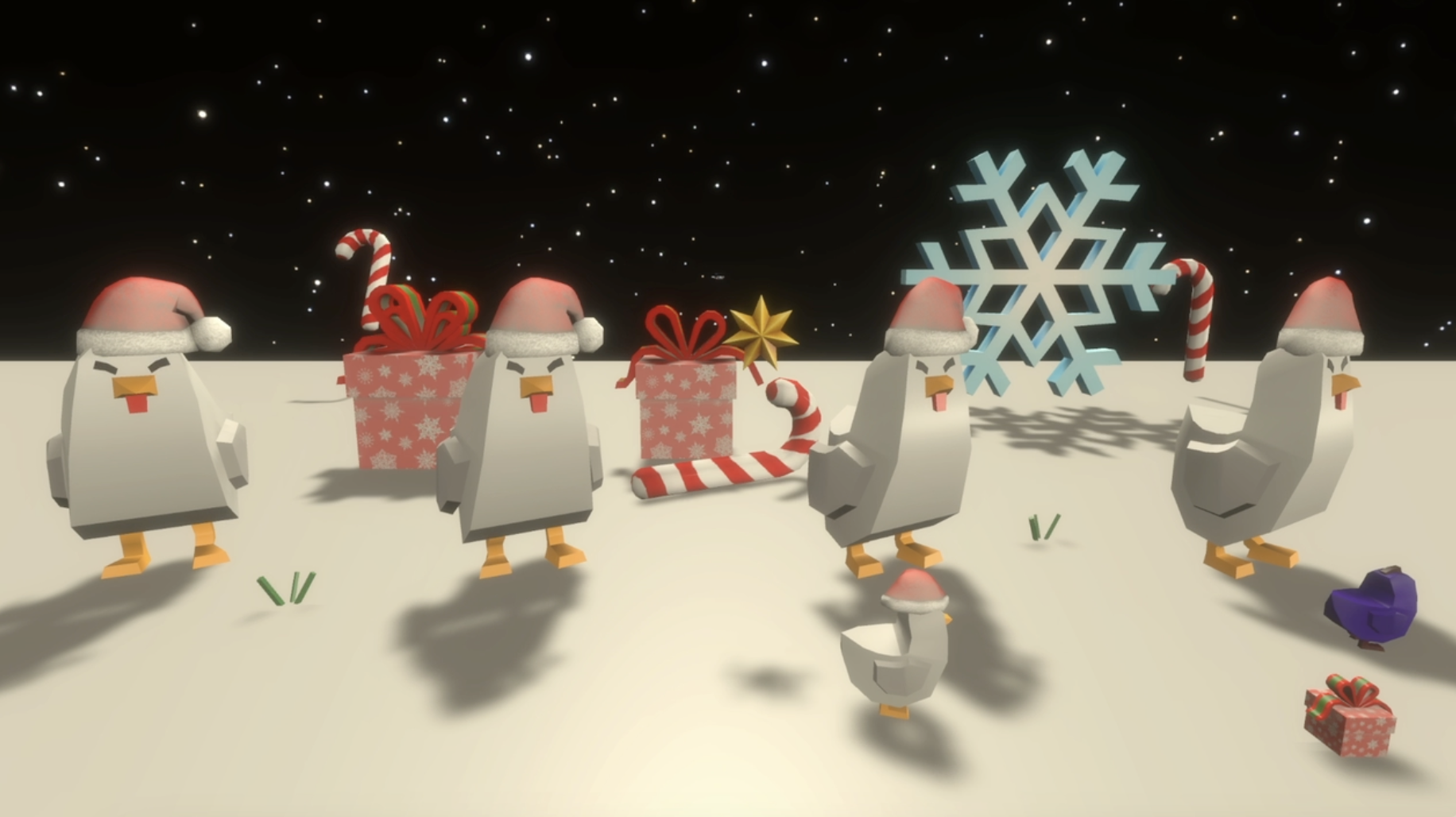
(3) GErlKonig: Das Kind on the Second Moon from the previous project GErlKonig is no longer running from music. Instead, he is rather marvelling at the subliminal beauty of music. The posture, the fog, and the rocks were an allusion to the Wanderer painting. I actually used the opening chords and arpeggiation from the Wanderer Fantasie by Schubert, in contrast with the ErlKonig by the same composer, although I had to lower their gain to not hurt the overall balance of the Christmas song.
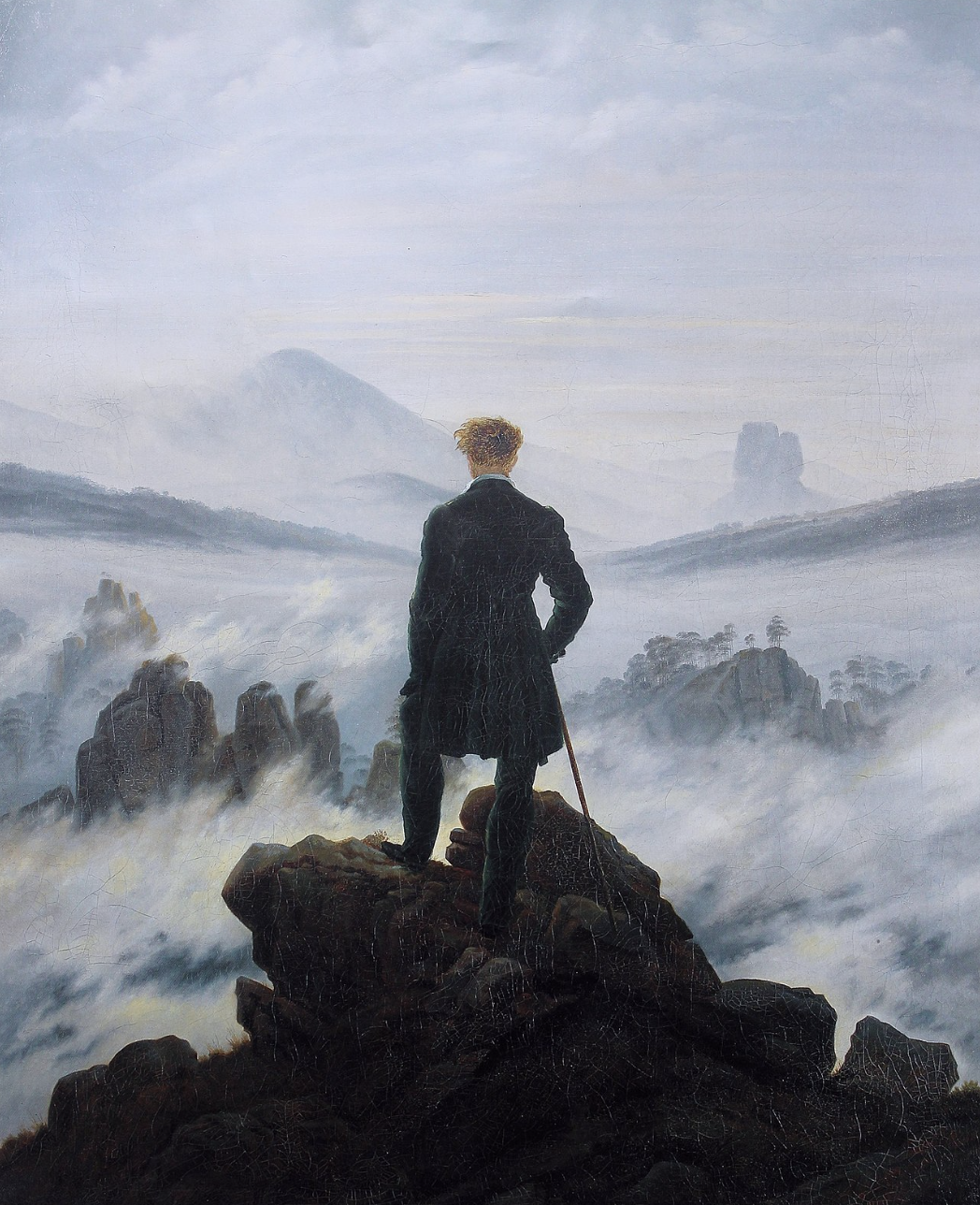
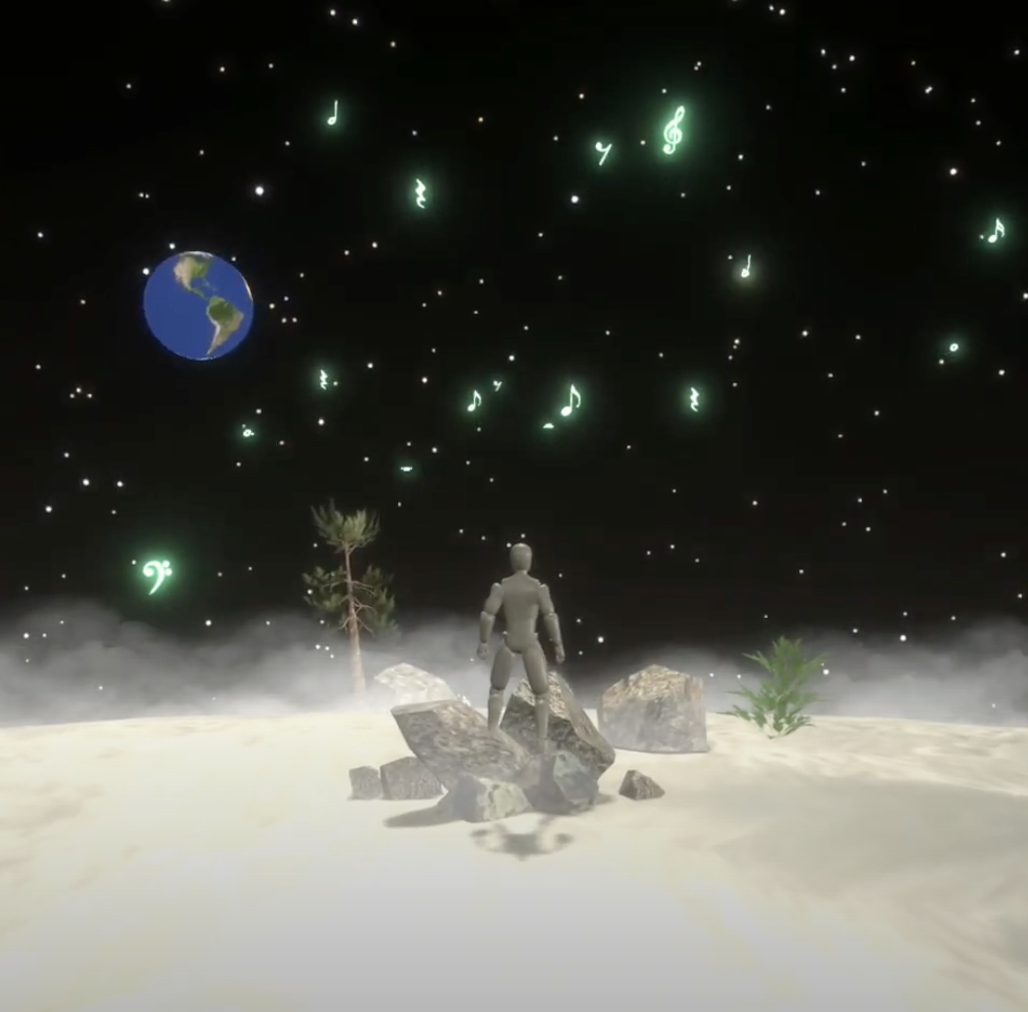
Also, there is no Second Earth, unlike in the GErlKonig project, as the cyberpunk space station by SpaceX also had to be aborted as an aftermath of its firing of astrophysicists.
(4) Eito's City: I wanted to create a scene from GErlKonig, to the Earth, to Rea's mom's Apartment. I thought the transition between Earth and the apartment was needed, a cityscape, and I did not want to create a random scene without meaning. Also, watching Eito's AudioVisualiser was one of the most satisfying moments throughout this class (same with Anthony's Frogs). I wanted to pay homage to those works, and thought it would be okay to do so since my final project is a world of Music256A.
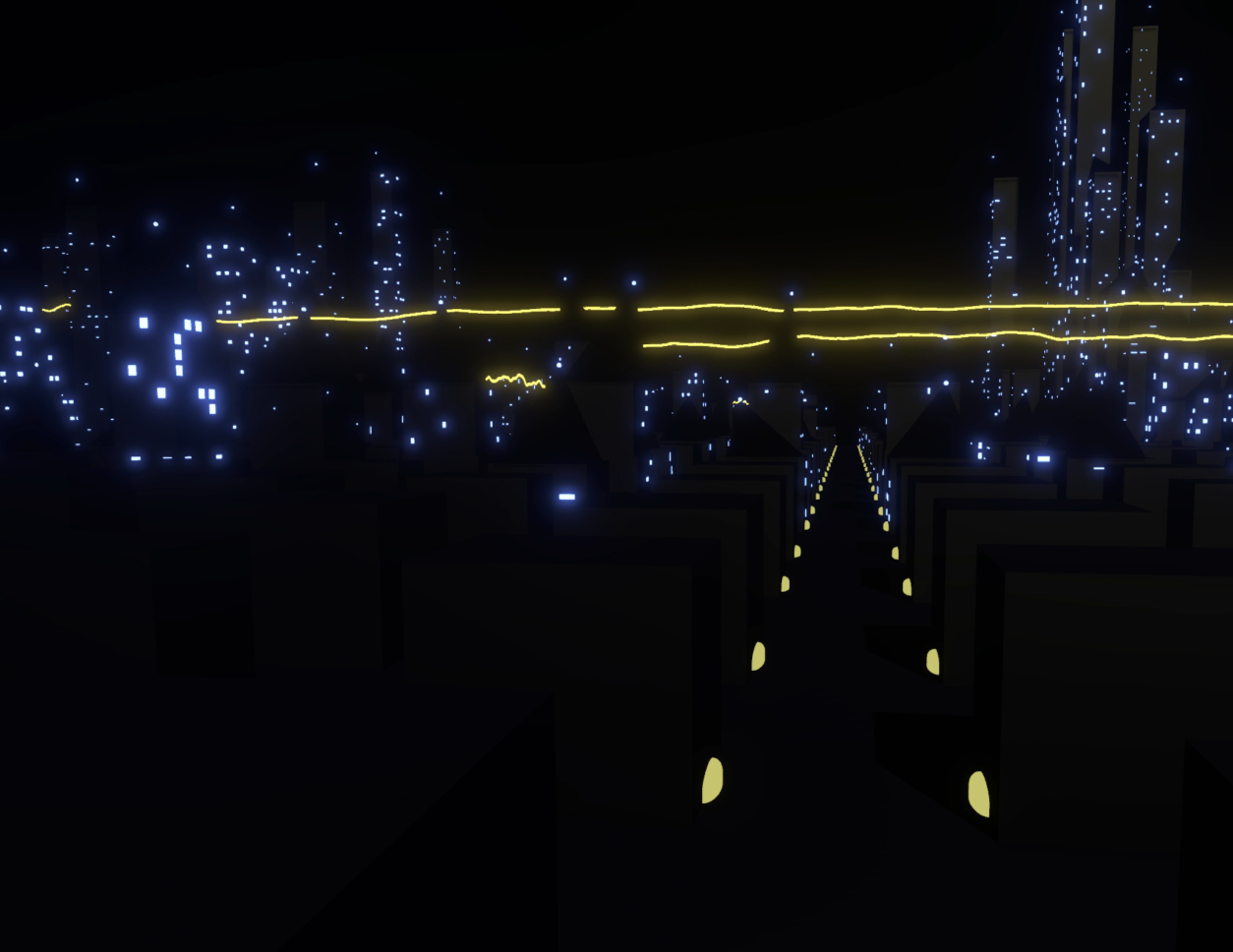

(5) Ocarina: Rea's using the app from space and it's approaching the Earth.
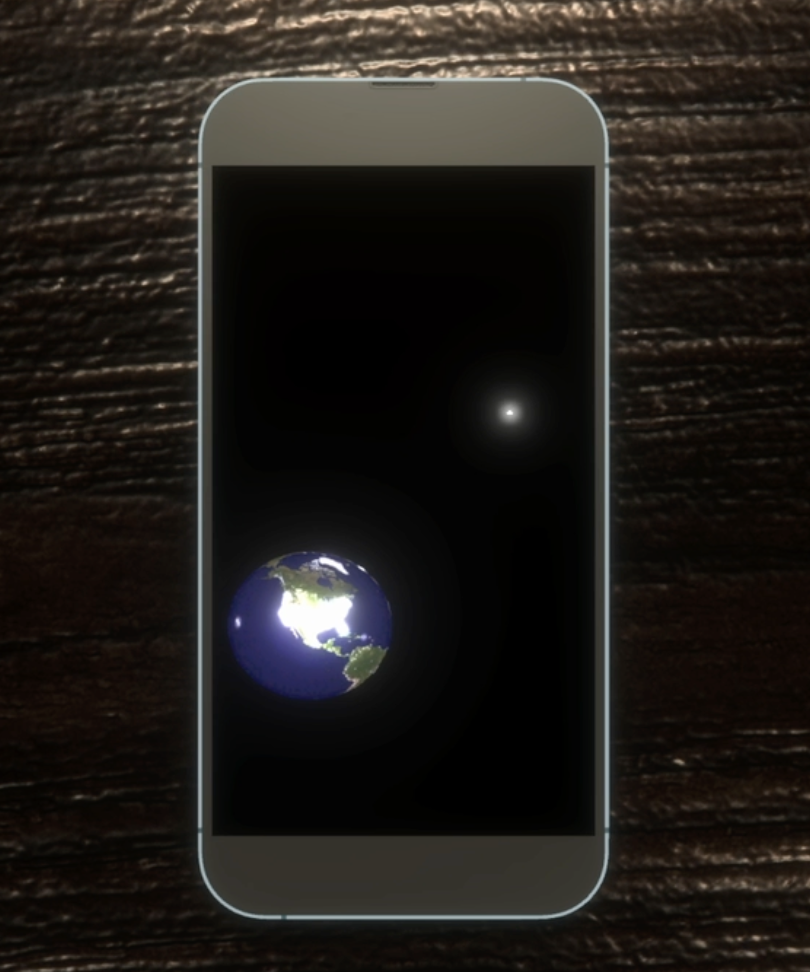
Feelings and Anecdotes
As I stated in my previous milestone, I had a wonderful moment when I went on Ocarina to hear it actually played and two of the two pivotal songs I wanted to use in my project were being played. They were 'Twinkle Twinkle Little Star' and 'We Wish You a Merry Christmas'. This was such a magical feeling. It felt as if it was destiny, and I was able to put way more energy into my project as a result.
I poured an insane amount of time into the project. The Chuck code for the Epilogue alone was more than 650 lines, since I manually added every element in the final Christmas song (using an array mapping that takes in a string such as "C4" and puts out the midiKey for that).
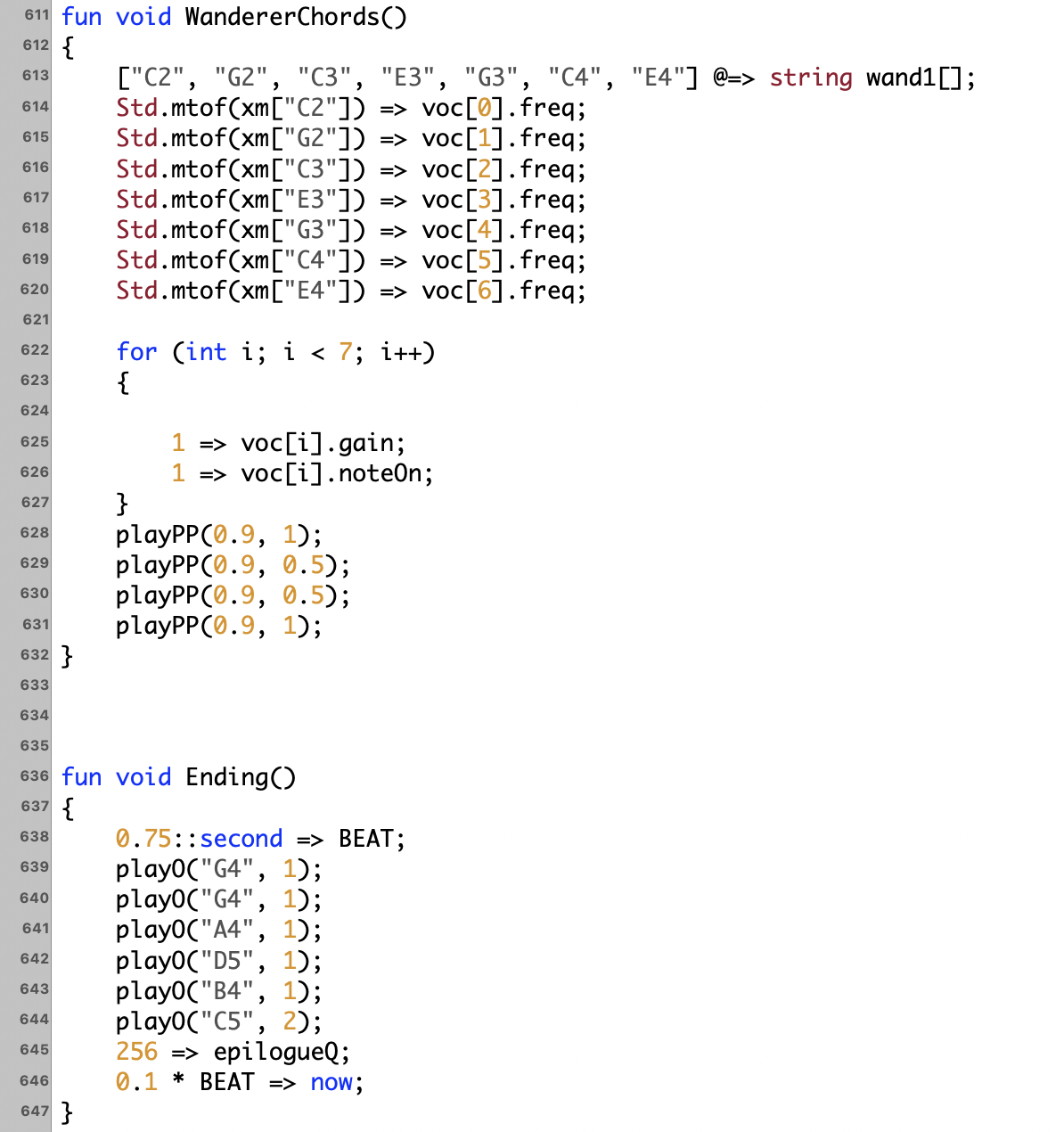
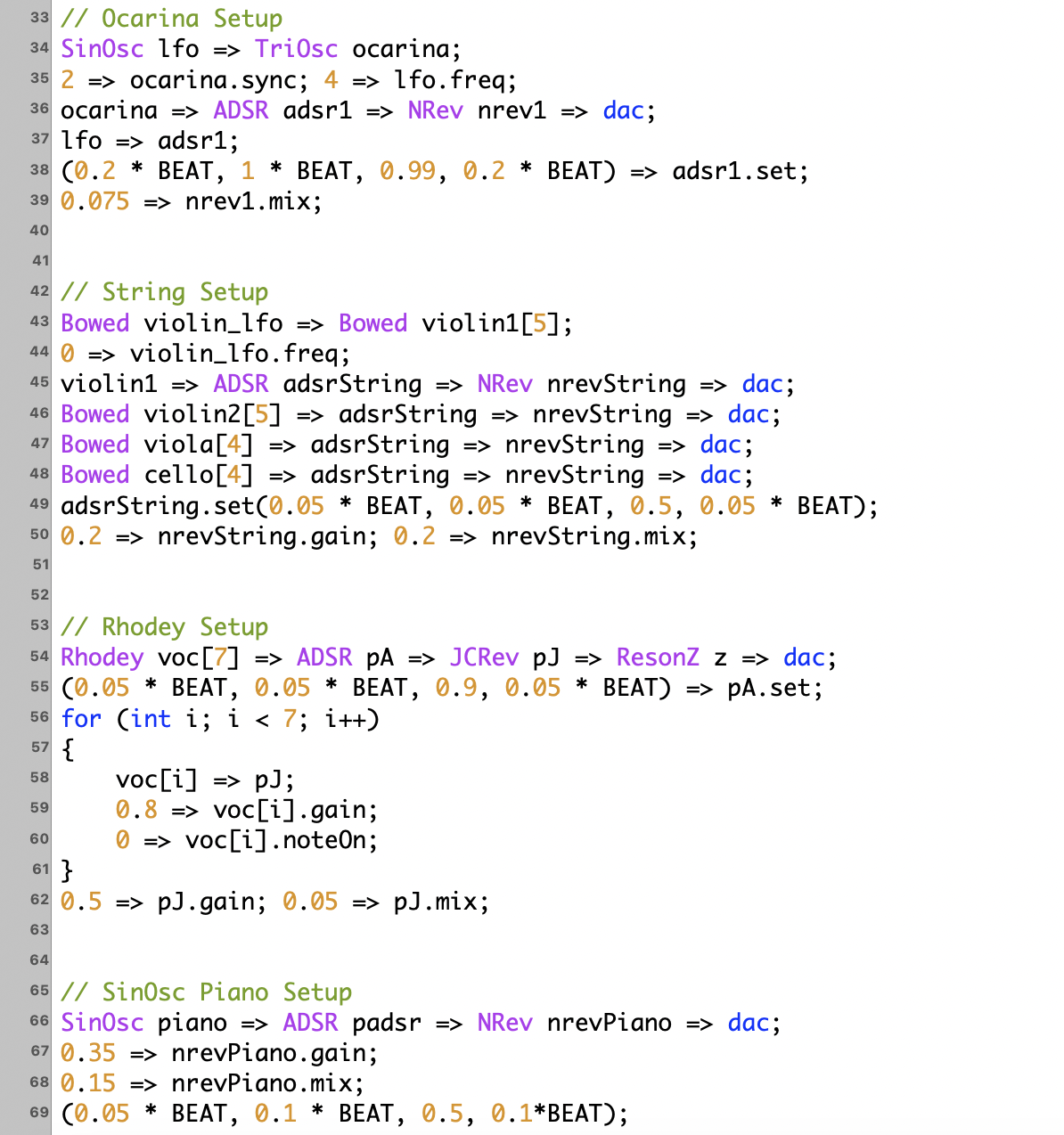
I really felt the 'flow'. I would go to bed thinking about what to code the next morning and would wake up and go to my laptop right away. I was so excited about this project and was really living in this world ever since Thanksgiving Break. I actually forgot to bring the Artful Design to the National Parks, and my reading response for Week 9 was not great, and I actually only read the Coda on my way back to Korea, but being in quiet national parks in Utah having forgotten to bring the Artful Design gave me an inspiration to start my scene with the Artful Design.
One thing that I found a bit strange while doing this project was that this was the first ever thing where I had almost everything planned out before executing any of it. I planned out the locks, the name of the character, the ending scene, and etc. before I even started coding the very first lock in Unity. It was always going to be an ending with an absurd finale (Reductio ad Absurdum) and a warmer epilogue.
In the scene with the past projects by my classmates as textures on space rocks, I was initially going to make this into something like the rollaball tutorial, playing a few seconds from each project when picked up. I already spent too much time with the narrative on the radio, so this idea had to be aborted and they were just rotating objects. Funnily enough, I couldn't get Yiheng stone to rotate without creating a separate script just for her. Great rebellious spirit, I guess.
The different locks here signify different components of identity. The Morse lock is one's name (Rea) and preference (Interstellar). The Chess lock is about one's intellect and where one is. The Knock lock is about one's mission and destiny. The Dynamite lock is about our biggest weapons and strengths. However, it is through the Love lock one Rea sees who she is, because it is a part of her mother's letter, and the biggest part of our identity is the ones that love us and the ones that we love. While the message is something that I hoped to convey ever since I started, I really felt this when I was reunited with my family after I returned to Korea right before the final presentation. It was something I needed, inspiration and love.
Mechanics
WASD for player movement. E for engage/pickup (Radio, Projector, Dynamite, Ocarina). KNOCX for knocking. FVNJ for Ocarina. Arrows for Chess Pieces control. Space for action. Enter for checking if the guess is correct.
Acknowledgements
Sound: Everything with melody was produced using ChucK. For percussion, only Cymbals were external sounds and rest were modalbars. Footsteps, waterdrop, lightsaber, door opening, box opening were borrowed from external sources, many of them from SoundJay.
Prefabs/Assets: the pyramid, the apartment, sci-fi scene kit, low-poly christmas set, vending machine (a lock that was never used due to time constraint), pine tree/plant kit, the notes, an 'office girl' (that I turned into the mom by changing the hair colour).
Many Thanks To: All of Music256A, Eunice (who drew Rea's painting), Kunwoo (who advised me to drop the idea of hand-crafting everything using Blender and taught me about iTween), and most importantly, Julia and Ge!
Previous Writings
7 Dec 2022: I had this magical moment, when I was trying to hear what Ocarina sounds like when other people are playing it. I put some baking soda into my microphone, so it only produces very weak sounds when I'm trying to play it. Really serendipitously, I heard someone playing 'We wish you a Merry Christmas' (somewhere in the Southwest) which was exactly something that I was trying to code in ChucK. It was in A major instead of C major that I was looking for, but it really gave me goosebumps. I also heard Twinkle Twinkle Little Stars, which was going to be mashed up in the final parts of the ending song, as if this was all a fate, even more things to reflect about my final project.
I'm exploring and expressing the fact that musical memory is a little bit like muscle memory. Even if you lose your actual memory, and do not remember things, you sometimes remember the tunes and melodies that you liked. I got this idea because my grandmother, who was a primary school music teacher, lost her memory for a few months after she fell from the stairs. After the surgery, it was as if her memory was wiped out. She would ask my mom if she was my dad's girlfriend. She saw me and called my distant uncle's name (my grandfather's cousin's son). She did not recognise the fact that I was my dad's son.
But then, she would ask me if I brought the sheet music. It was the first ever Rachmaninoff Preludes sheet music published by a Korean publisher, printed around 1960, even before my parents were born. She gifted this to me, because she did not play Rachmaninoff anymore. She would also hum some of the melodies that she used to sing.
She eventually got her memory back, which is still a mystery to my family, although we are so grateful for what almost seems like a miracle.
The main character in my Escape Room game, Rea Song, wakes up on a spaceship, and she does not remember who she is, where she is, why she is there. By solving puzzles and learning her favourite melodies again, she answers these important questions about identity.